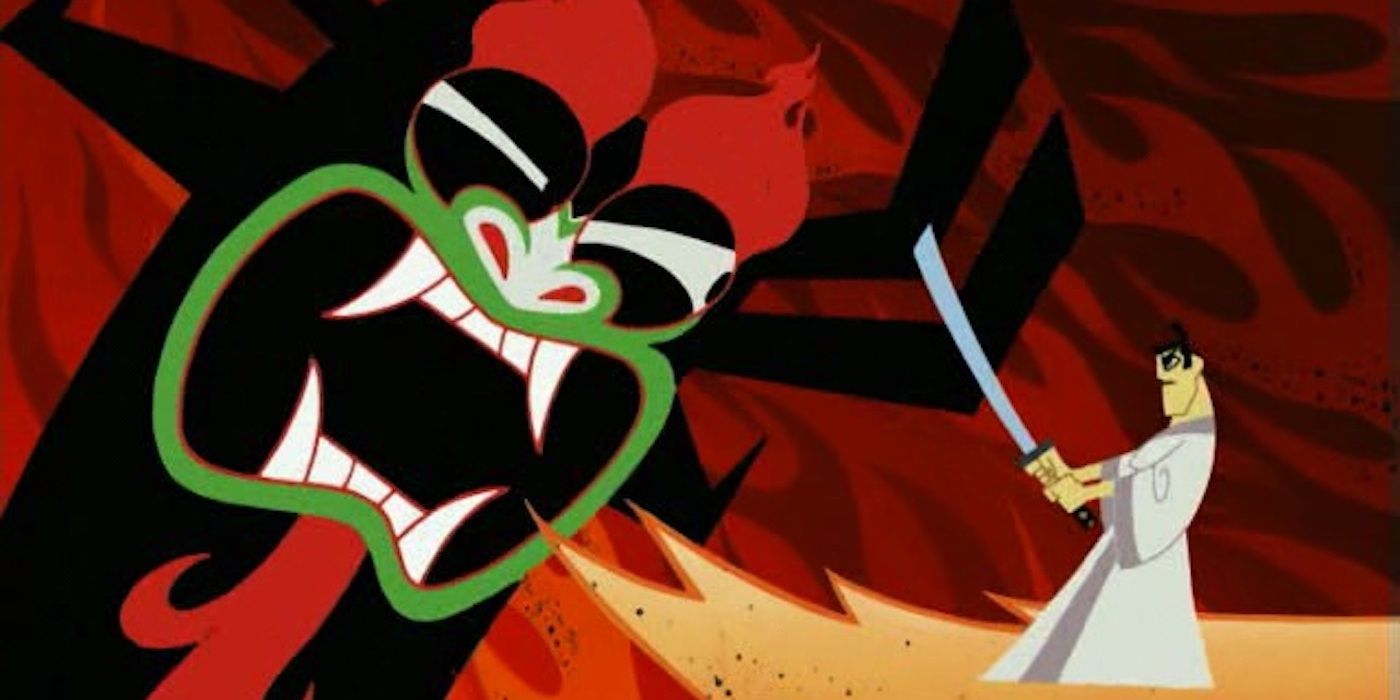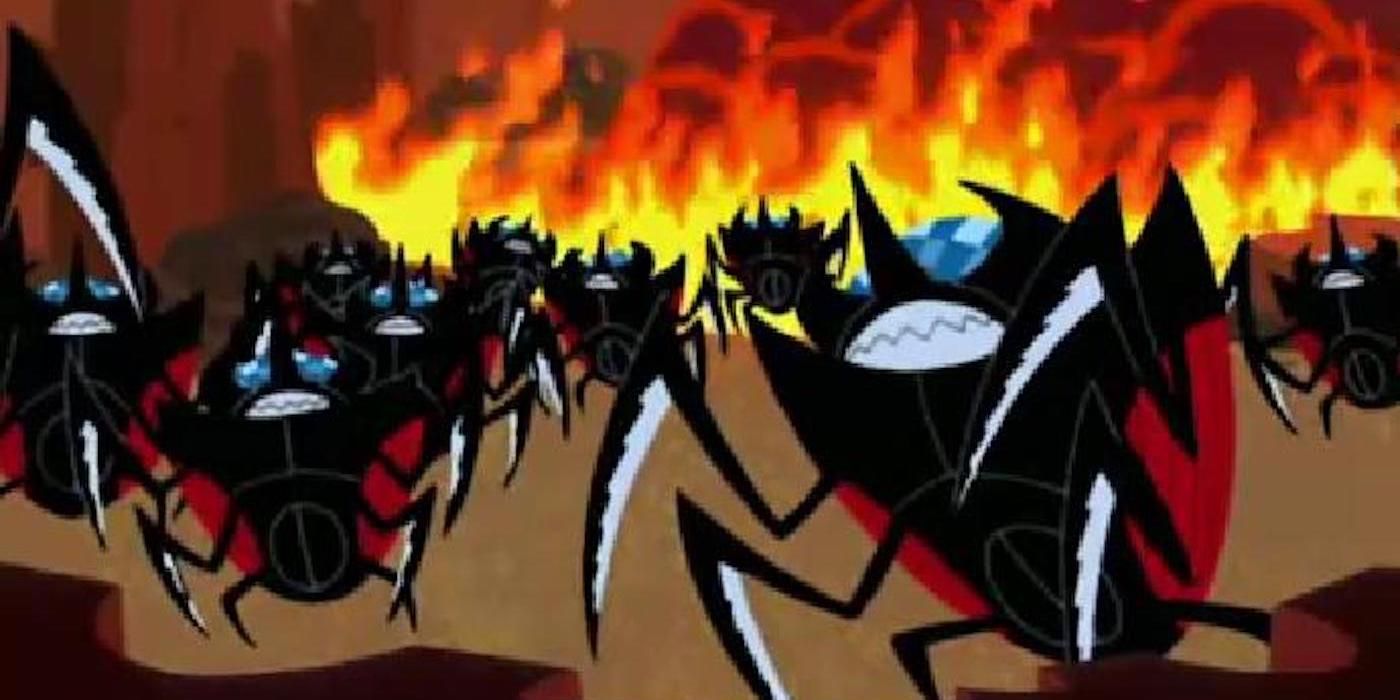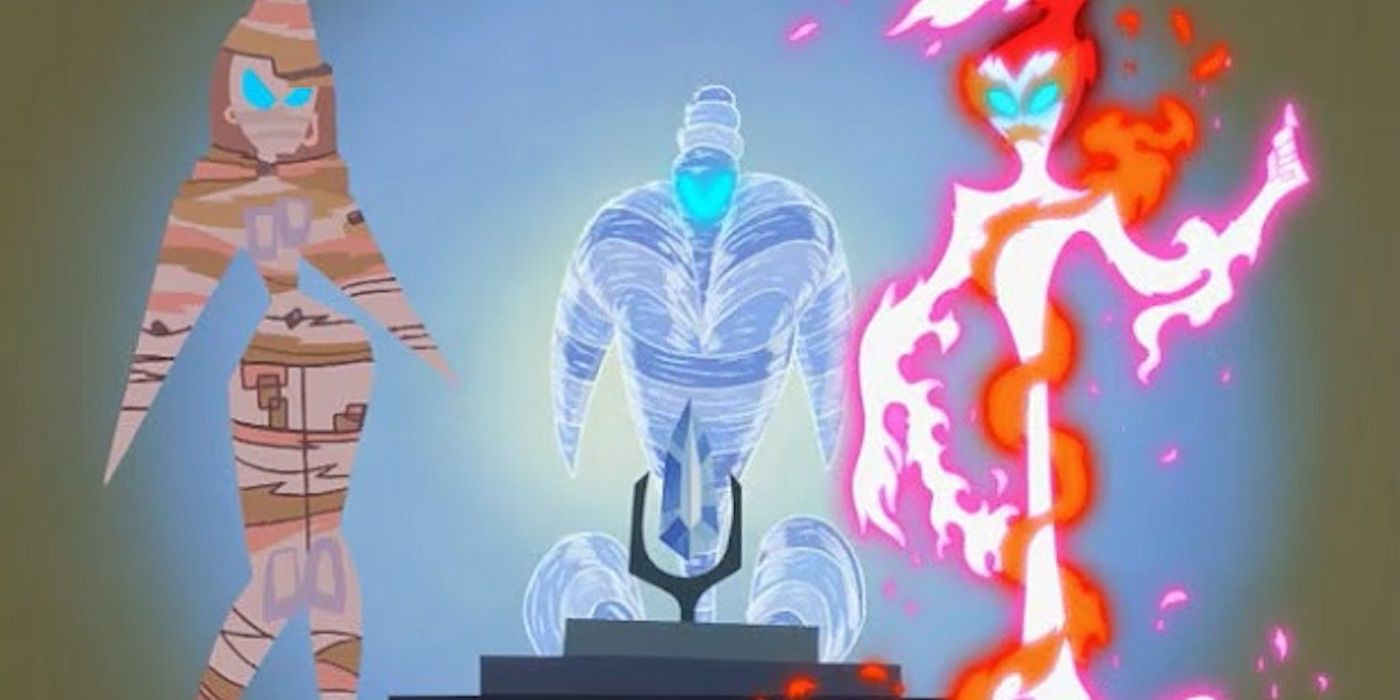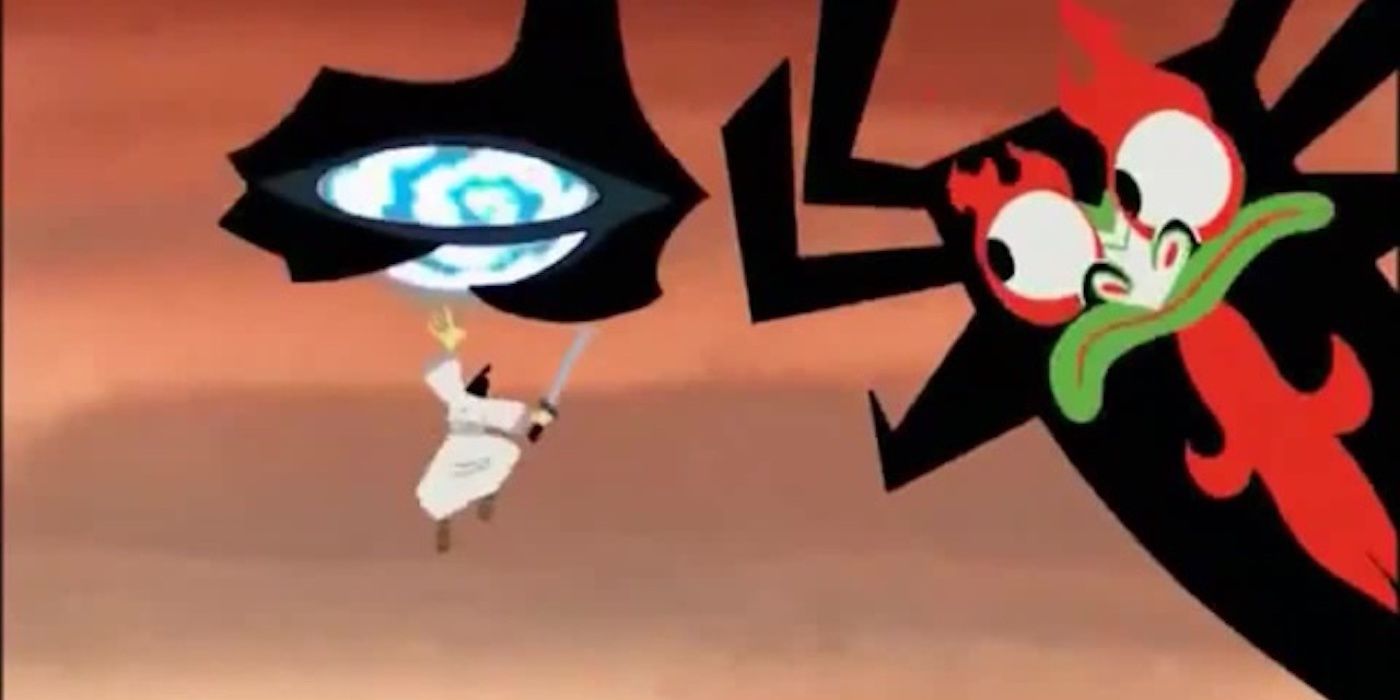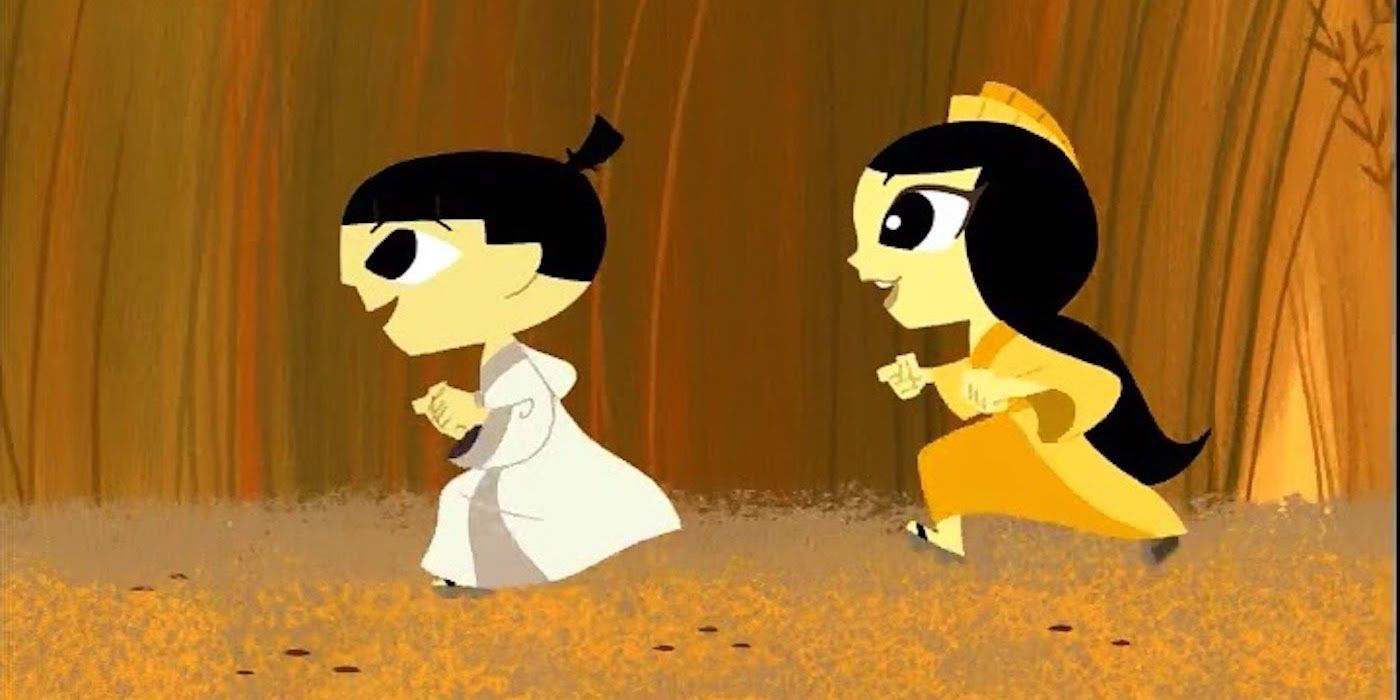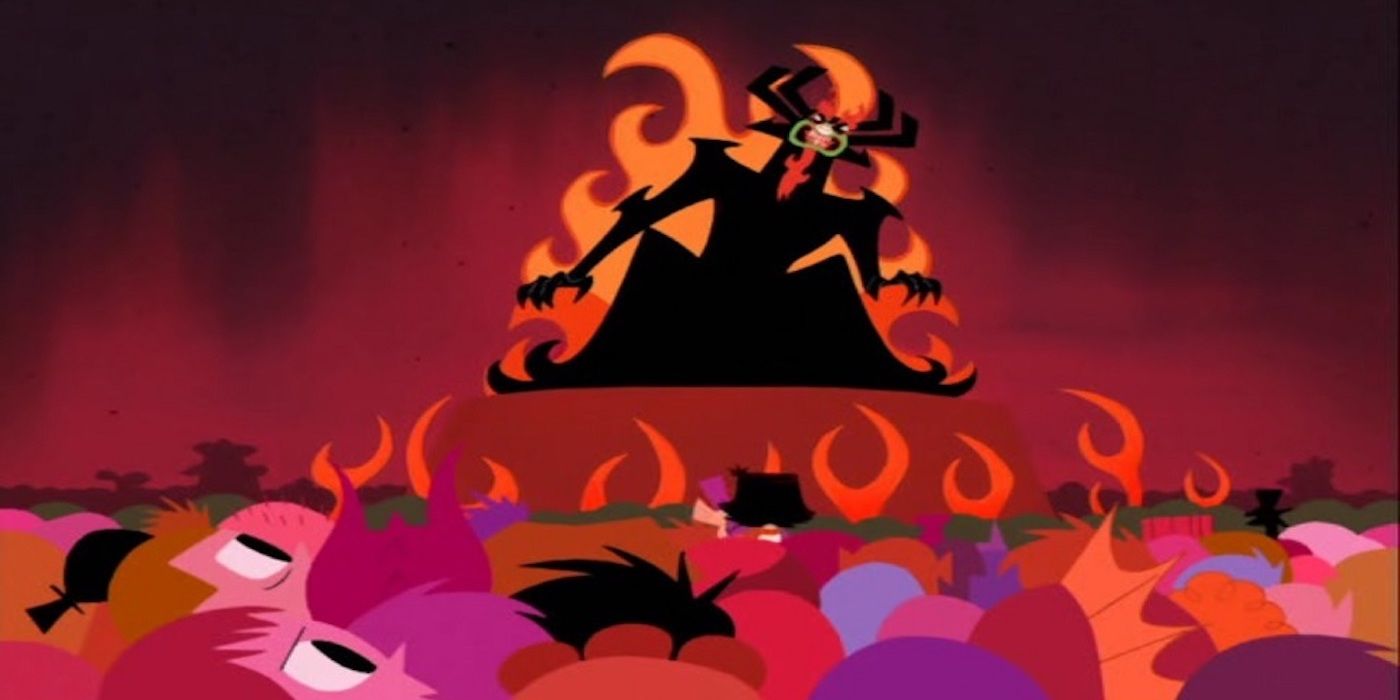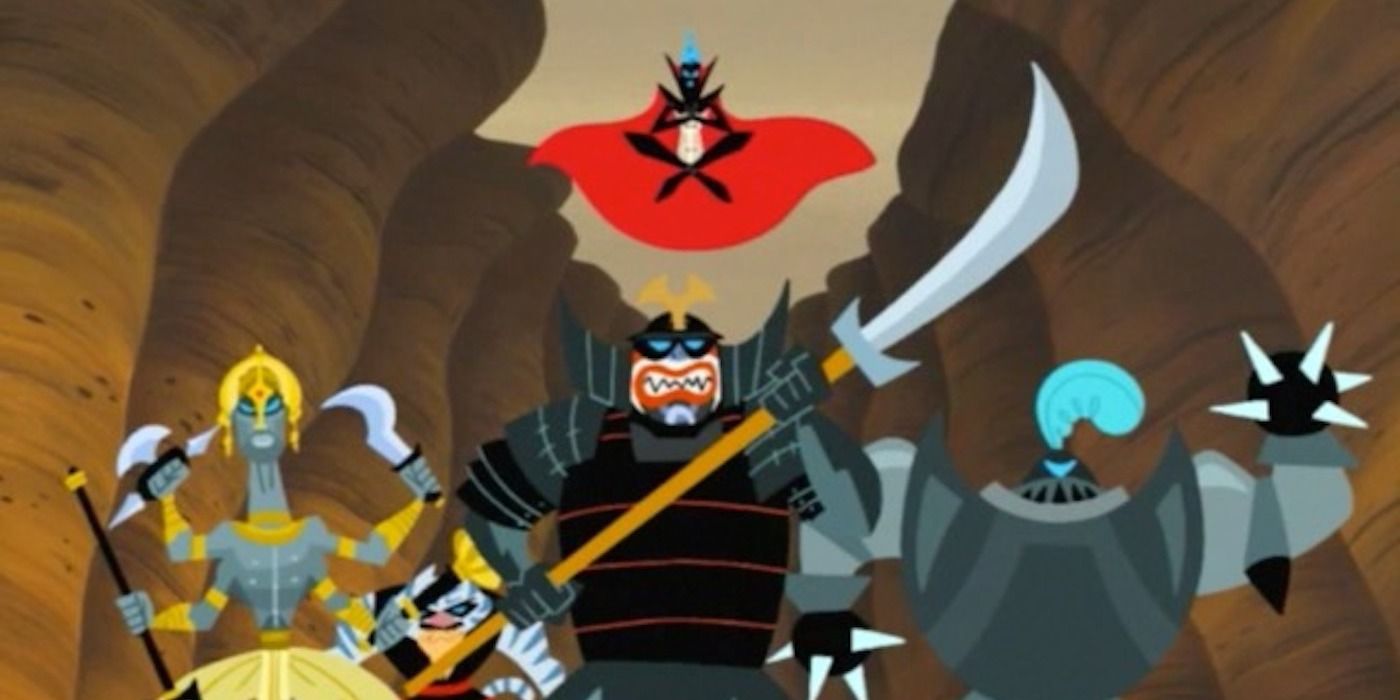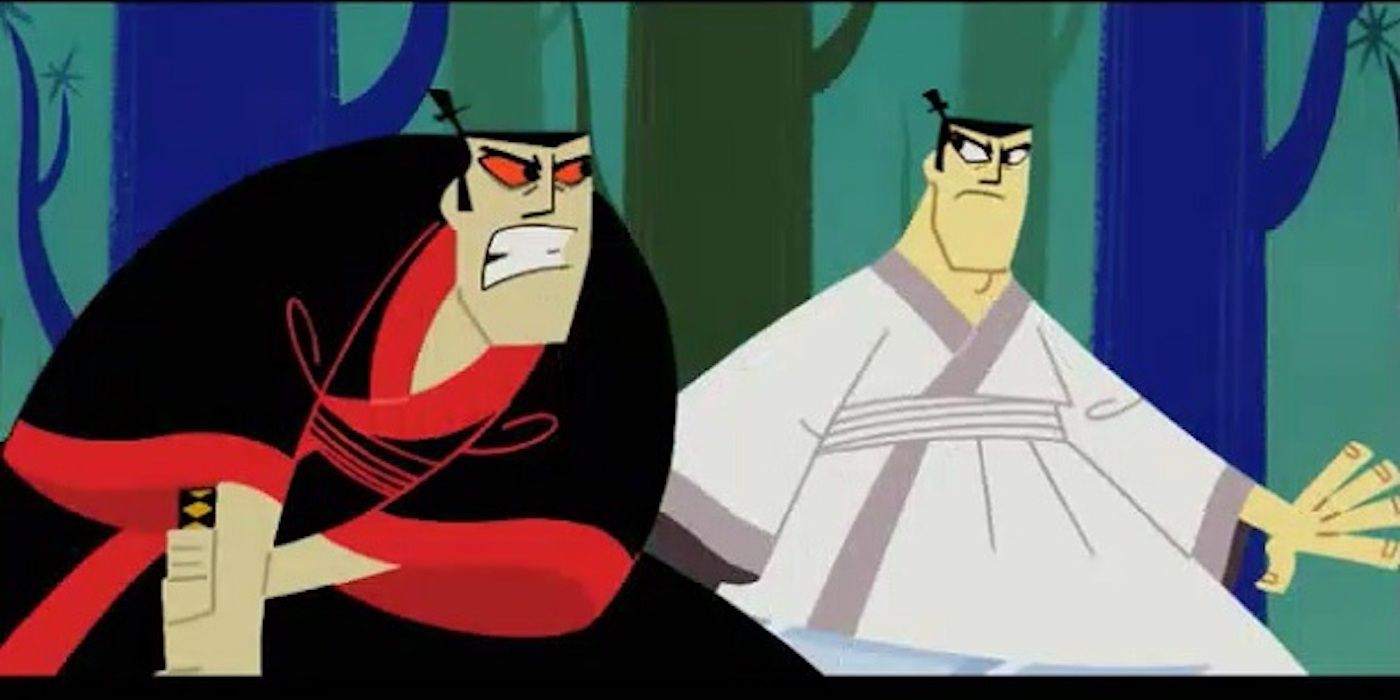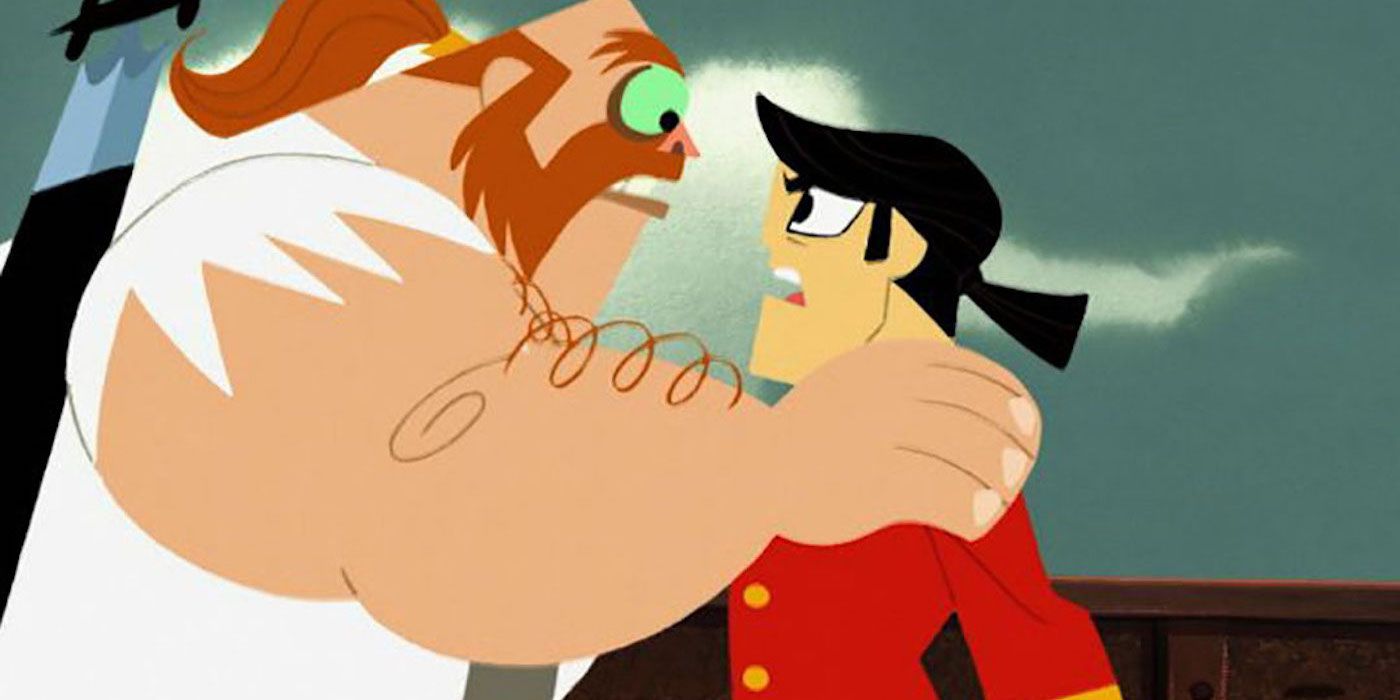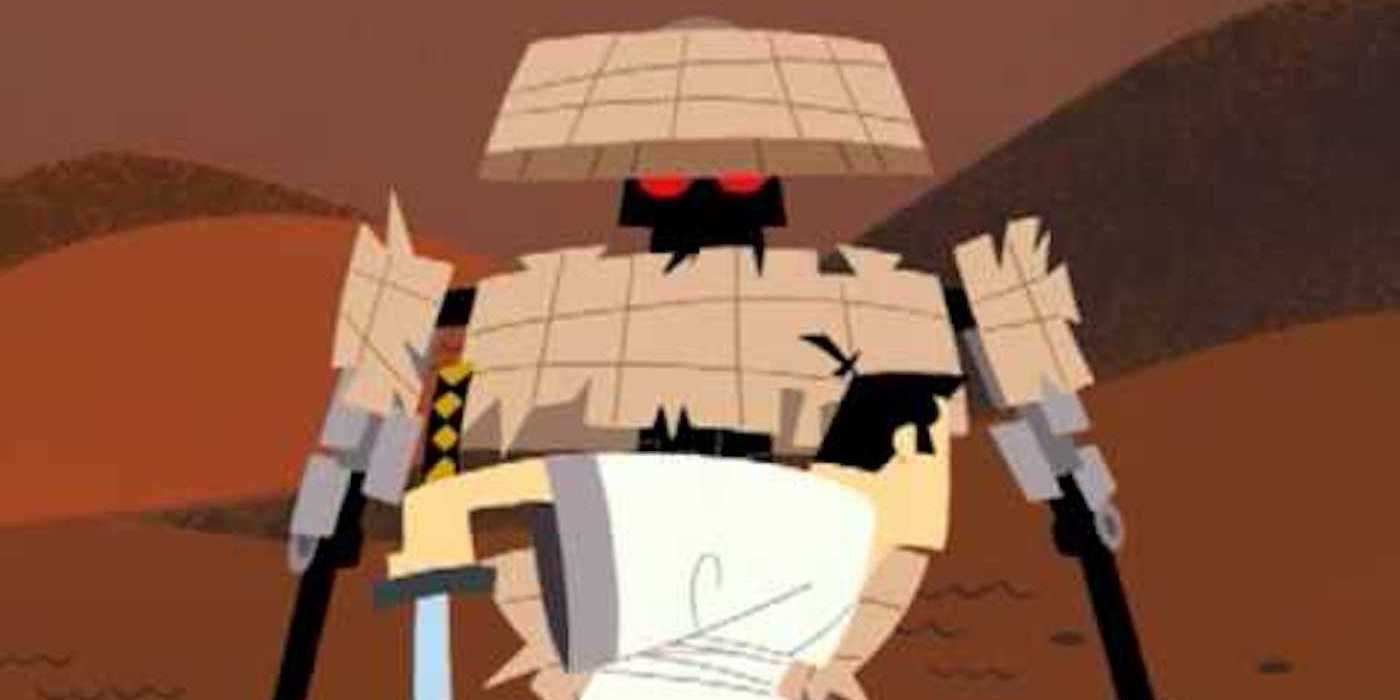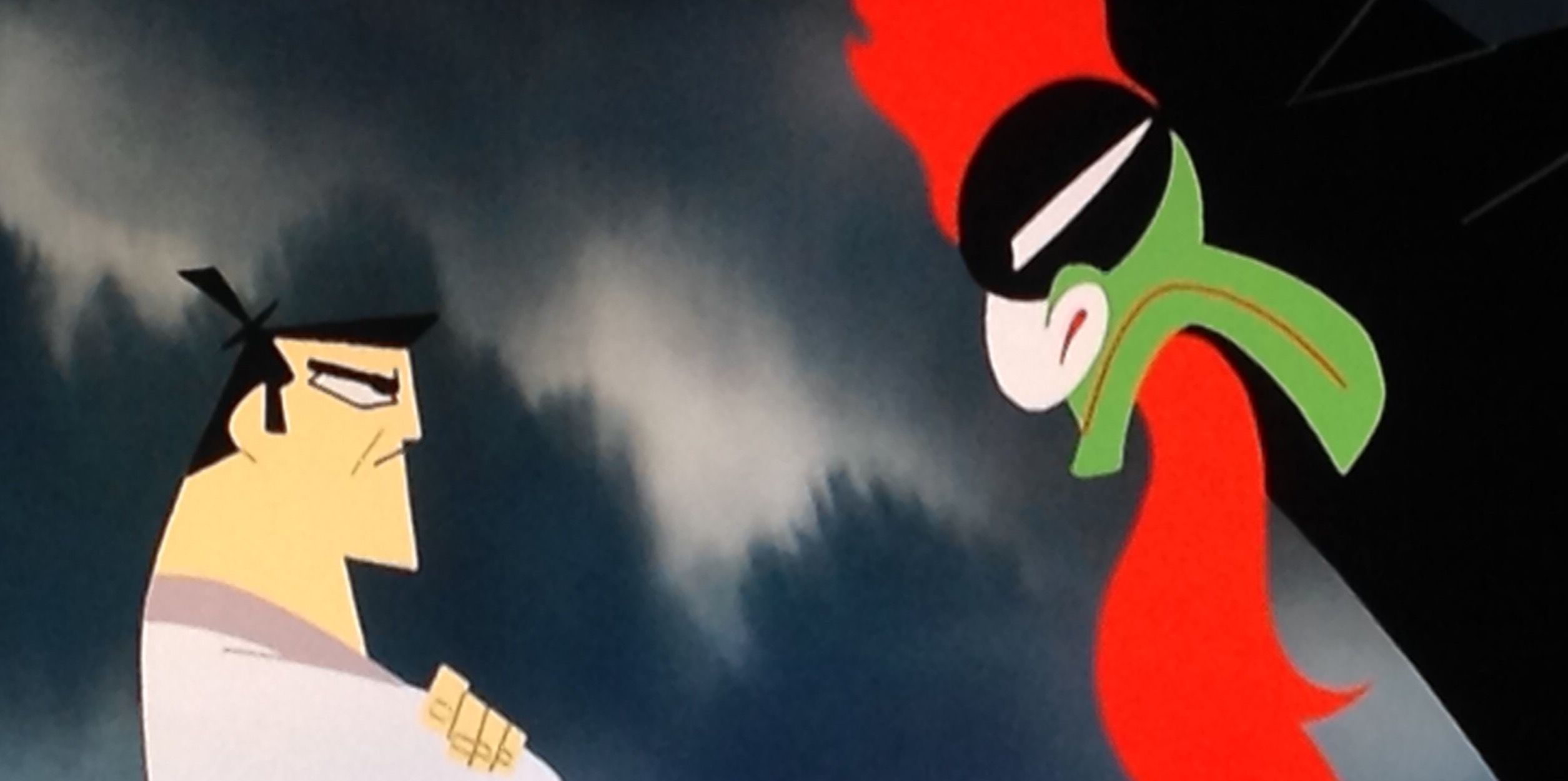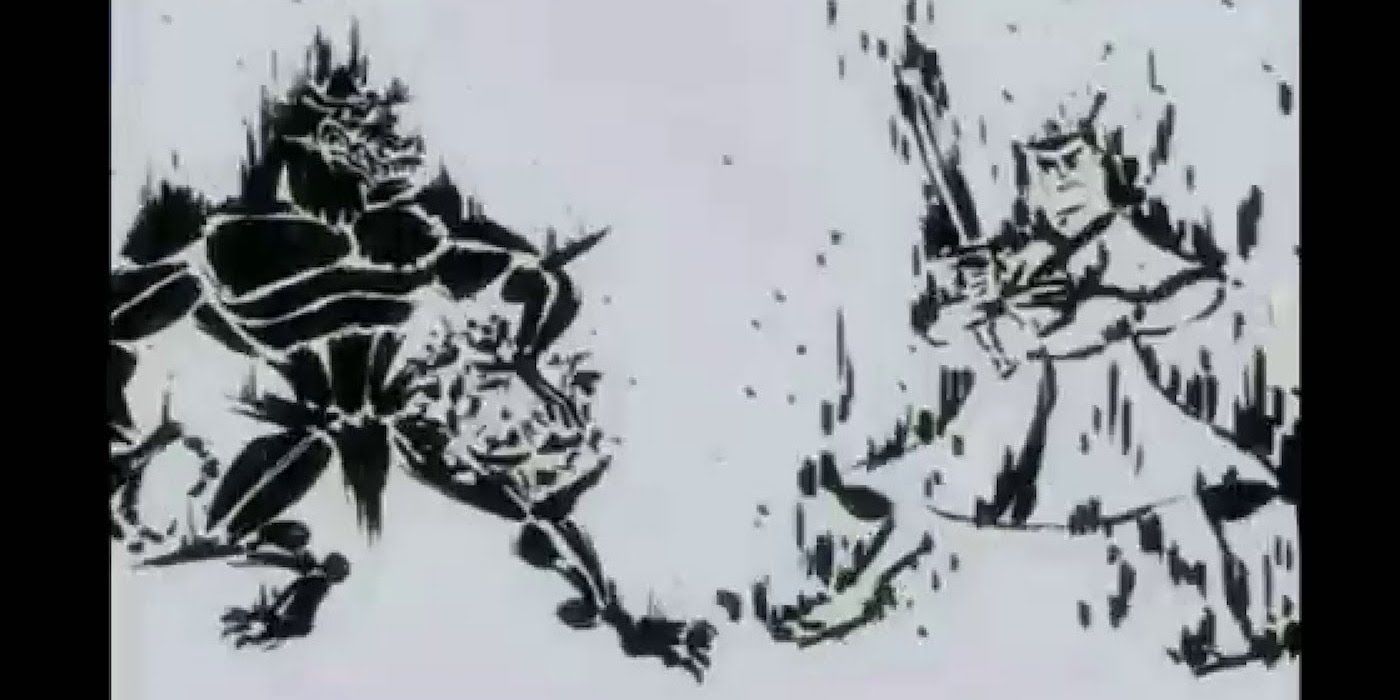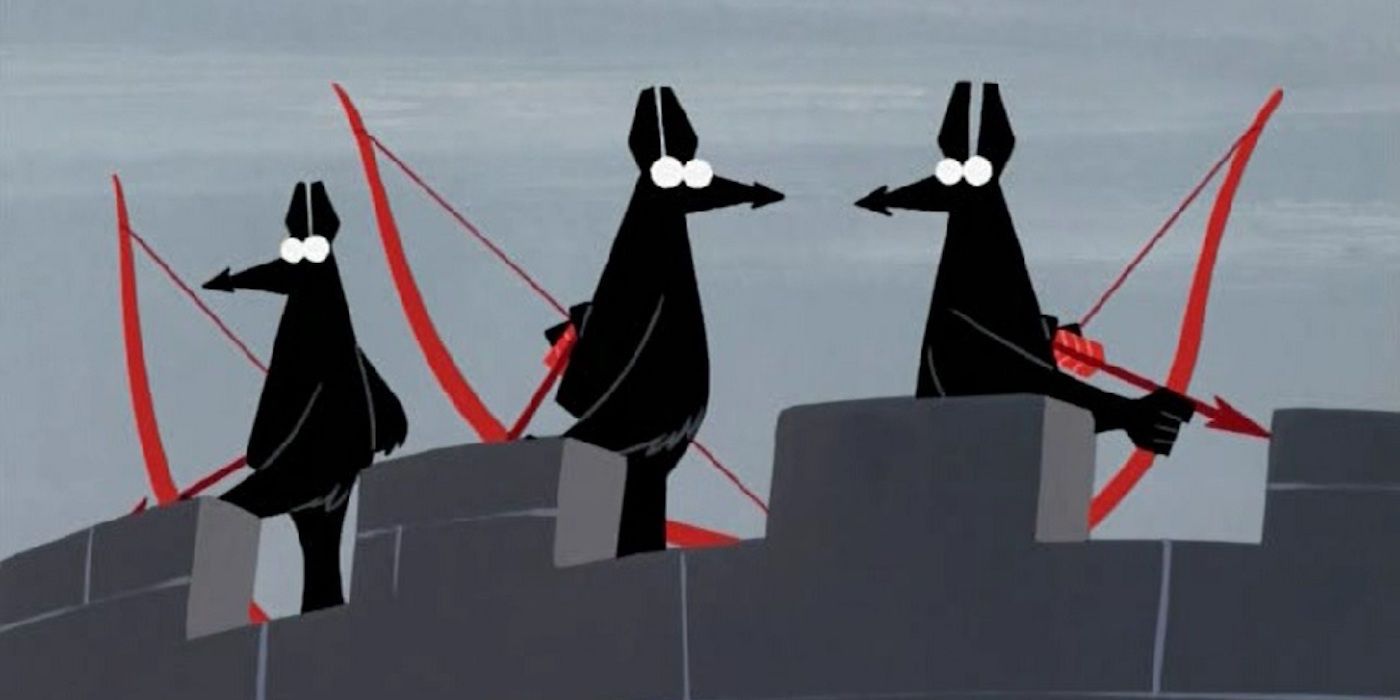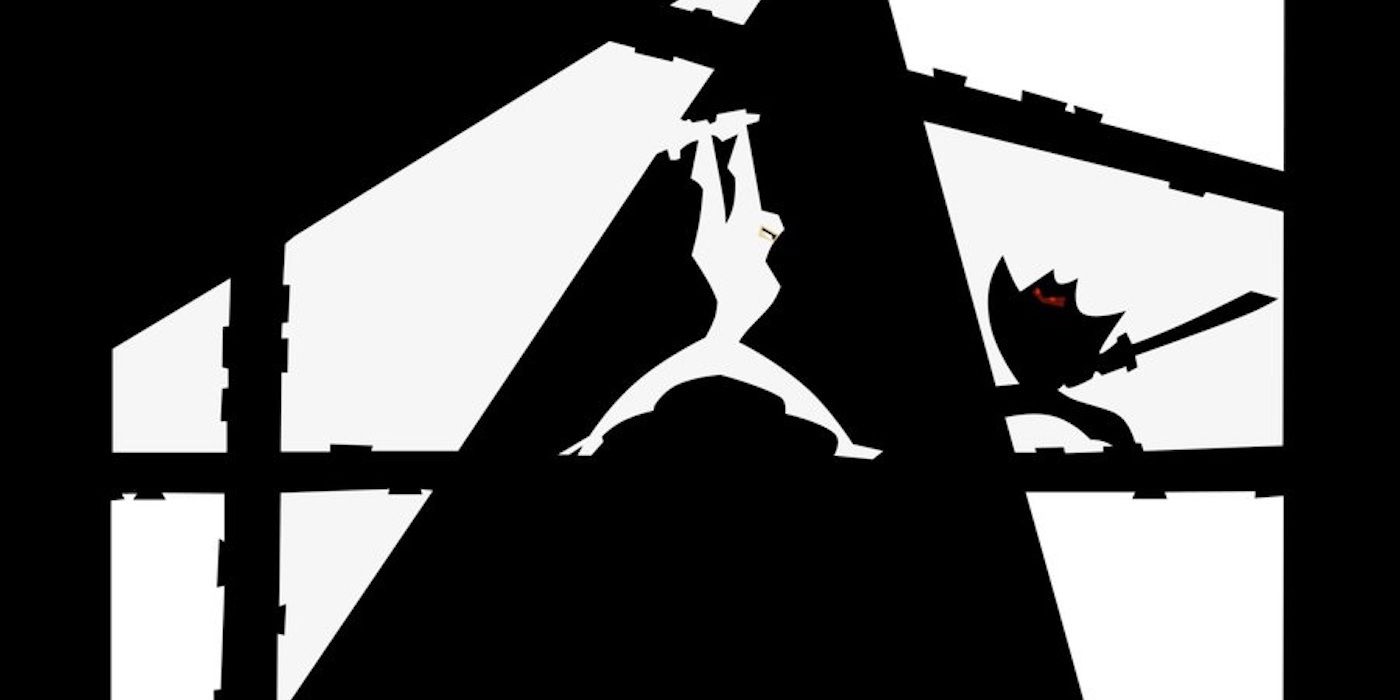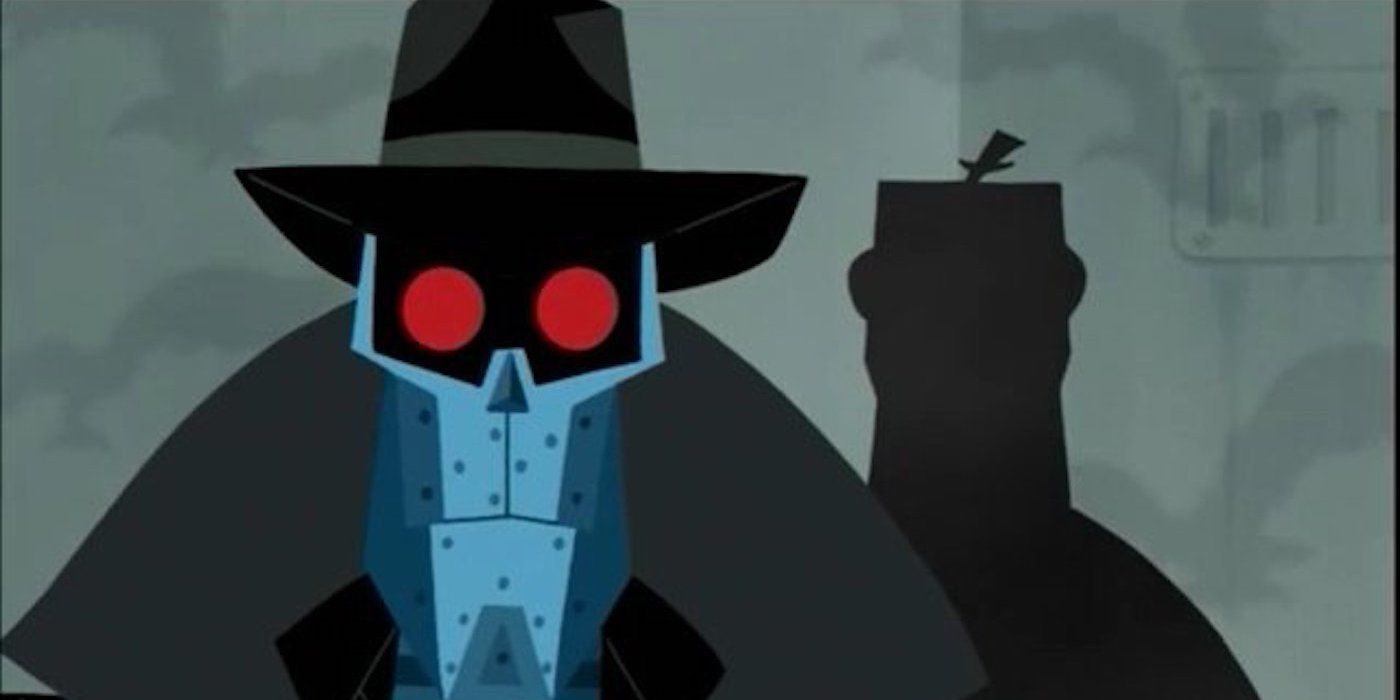It’s very rare that a television show—let alone a cartoon—can take the audience’s breath away by sheer creative force. Samurai Jack hacked and slashed its way onto Cartoon Network all the way back in 2001 - a month before the Adult Swim programming block even appeared - and instantly defined itself as a very different sort of show. Coming from animation genius Genndy Tartakovsky, the series pushes forward a simple narrative of archetypal good versus evil, yet every episode manages to throw you into a whole new world or stylistic homage. Samurai Jack masterfully weaves storytelling, animation, and action in revolutionary ways to result in a quest series like no other. It may have been 11 years since Samurai Jack prematurely went off the air, but in a lot of ways the show has never felt more relevant and mainstream. With Tartakovsky’s classic show set to return in a limited series on Adult Swim that finally concludes the Jack versus Aku tale, it feels only appropriate to re-visit Jack’s most impressive, stand-out installments. Here Are 15 Must-See Episodes of Samurai Jack.
15. “Samurai Jack: The Premiere Movie”
A series of this magnitude needs to kick things off on the right sandal-clad foot, with Samurai Jack essentially presenting a movie—or three connected episodes—that tell Jack’s origin story. Made up of the episodes “The Beginning,” “The Samurai Called Jack,” and “The First Fight,” Jack’s main beef with Aku is detailed to a compelling degree here, with his ensuing banishment to the future also getting healthy focus (not to mention learning how he gets his modern name). This introductory tale might be heavy on the exposition, but it still consistently slashes expectations to ribbons, like pairing Jack with a collection of talking archaeologist dogs. The beginning of all of this does a good job at introducing viewers to the subtle, patient beauty of this series, but “The First Fight” is especially powerful for marking the first occasion this show gets to really dig into a massive fight scene. Jack’s battle with the Beetle Drones is 15 minutes of non-stop sword swinging action, which is something that almost seems impossible for a cartoon - but Samurai Jack makes the impossible possible.
14. “Jack and the Gangsters”
At its core, Samurai Jack is already a warm love letter to samurai and Kung Fu storytelling staples. That being said, this is also a series that is never satisfied standing still and is constantly striving to push the medium further and take on more stylistic complexity. “Jack and the Gangsters” is one of the earliest examples of the show mixing things up, with the first season entry delivering an affectionate homage to the noire genre. The episode sees Jack temporarily donning a fedora and pinstripe suit under the alias of Jackie the Blade as he finds himself working undercover for the mob in order to ultimately get close to Aku.
That concept alone is enough, yet this episode also has Jack fighting the spiritual embodiments of Earth, Wind, and Fire in order to acquire the legendary Neptune Jewel that allows its owner control of all of the planet’s water. The entry leans into the mobster conventions heavily, with sometimes beautiful set pieces playing out as a result, like Jack mowing down robot thugs, set to dazzling lounge singing. Furthermore, “Jack and the Gangsters” even has Jack actually fighting Aku in it! What’s not to love here?
13. “Jack Learns to Jump Good”
Sometimes you just want to feel good. And no episode of Samurai Jack conjures up such feelings of joy as its second season premiere, “Jack Learns to Jump Good.” Taking a bit of a break from the more action-heavy installments, this episode wisely tries to build up the show’s other strengths while it simultaneously does the same thing with Jack. This episode is mostly concerned with Jack befriending a caveman-type individual who is a part of a too-cute tribe of gorillas that can “jump good.” Jump really good. The touching entry sees Jack trading off his fighting ability so the gorillas are able to defend themselves in exchange for their supreme jumping skills. The episode also continues the show’s interest in the theme of nature versus machines: Jack’s stands up for something natural in the face of industry. Rather than lengthy battle scenes, “Jack Learns to Jump Good” replaces them with physically laborious—albeit inspiring—training montages that show Jack steadily increasing his strength. When he finally drops his weights and launches for the sky, it’s one of the show’s most gleeful, magical moments.
12. “Jack Remembers the Past”
Samurai Jack ran for four seasons and 52 episodes before it got yanked off the air. It’s only natural that over the course of that time the show would be interested in dipping its sword into the backstories and histories of some of its main players (Aku’s origin even gets explored). “Jack Remembers the Past” takes the pressure away from Jack’s impending battle with evil in the present and instead steps back into an adorable, moving glimpse into Jack’s childhood. Upon the discovery that his childhood home is now part of the scorched earth that is Aku’s kingdom, he reminisces back to his youth and his training as a young boy.
Even though Samurai Jack’s premiere fills in some of the background details on Jack, this deeper glimpse into the stoic warrior makes for a highly entertaining experiment. It also doesn’t hurt that Ogami Itto and Daigoro from Jack's youth are pretty obvious allusions to the wonderful manga, Lone Wolf and Cub. “Jack Remembers the Past” balances out the sweet and sorrowful of Jack’s life in the best possible way and shows that character development is still possible in a show like this.
11. “Aku’s Fairy Tales”
The finale for Samurai Jack’s first season could have gone in a number of directions, with a showdown of some sort between Jack and Aku seeming like the inevitable conclusion. However, Tartakovsky decides to buck expectations in a delightful way by instead delivering an Aku-centric episode that sees him re-telling a number of children’s stories in his own warped way. This low-key endeavor where Jack barely even appears—in story form or otherwise—is the perfect way to cap off the show’s unpredictable first season. It’s also a showcase of the bizarre character that is Aku, not to mention the superb vocal work that Mako brought to the role.
“Aku’s Fairy Tales” is one of the better illustrations of the show’s wry sense of humor. Watching Aku get progressively aggravated over the children craving Samurai Jack stories rather than Aku propaganda is a lot more fun than it should be. As it watching the little ones take over Aku’s narrative and inject his story with their own Jack-filled touches. Plus, that “Here’s Jacky” Shining reference is pure gold.
10. “Jack and the Spartans”
Remember that time in the mid-2000s when everyone was obsessed with Frank Miller’s 300 for a hot second? Well “Jack and the Spartans” very much plays into that wheelhouse, with the offering basically amounting to Tartakovsky’s own, personal take on the Battle of Thermopylae. “Jack and the Spartans” sees Jack teaming up with 300 Spartans in order to conquer an army of villainous robot minotaurs. Yes, it’s as cool as it sounds. This episode does a great job at displaying the grandeur possible in the show’s larger free-for-alls, with this also being a particularly well animated installment, too. All of that fast-paced, sprawling carnage pops extra well as a result. “Jack and the Spartans” might boil down to the tried and true formula of Jack taking on an enemy for a stranger, but this entry especially speaks to the character’s empathic nature. All of this makes the Spartans also look cool as hell and become one of the more compelling adversaries that have fought along Jack’s side.
9. “Jack Vs. Demongo, The Soul Collector”
Jack has fought a number of strong enemies on his quest to defeat Aku, but what’s maybe even more surprising is how many ferocious assassins Aku has been able to sic on Jack through the course of the show. Robots are a considerable pain, but Aku’s most dangerous underling is Demongo, a demon of sorts who collects the souls of his fallen enemies. Demongo doesn’t just collect these souls and peacefully admire them from afar, no, the necromancer is capable of conjuring these souls to later aid him in battle. This of course leads to Jack not just taking on the formidable Demongo, but a whole horde of spiritual threats along with him. What’s even worse is that Jack’s sword doesn’t seem to have any effect against the supernatural enemy. “Jack Vs. Demongo” acts as a firm reminder that as smart and strong of a fighter that Jack is, sometimes he is outclassed and those moments of vulnerability hit all the harder. Jack’s strong spirit ends up overwhelming Demongo in the end, but before then he’s certainly one of Jack’s most dangerous enemies.
8. “Jack Vs. Mad Jack”
It’s a classic trope in storytelling to have the protagonist come up against a dark mirror version of themselves. For every Link, there’s a Dark Link; for every Darkwing Duck there’s a Nega Duck. And for Jack there is Mad Jack. About half way through Samurai Jack’s inaugural season, Mad Jack wills himself into existence after Jack gets particularly frustrated from all the bounty hunting going on over him. All he wants is some peace and quiet. Jack is so typically a level-headed individual that the show doesn’t waste this eruption of anger and what it means for the character. Jack fighting an evil version of himself makes for an exceptional sword fight that of course results in the two of them being evenly matched fighters. The episode rather brilliantly solves the Mad Jack problem by Jack cleansing himself of his angry thoughts. With his anger no longer existing, neither can Mad Jack. Sometimes heady problem solving can be mightier than any sword.
7. “The Scotsman Saves Jack”
If there’s any sort of supporting player throughout Samurai Jack’s four seasons, it would be the Scotsman. The strong-willed character first shows up in the show’s first season episode, “Jack and the Scotsman” and became such a popular fixture in the universe that he ends up appearing regularly and is even set to return in Adult Swim’s revival. It’s also just nice that the character, who is voiced by John DiMaggio, reunites Phil LaMarr with one of his Futurama co-stars. The guy also had a machine gun for a leg long before Robert Rodriguez was concocting such ideas. While the character’s introductory episode makes for a strong example of the Scotsman and Jack’s complementary personalities, the “The Scotsman Saves Jack” ends up doing more with their relationship. For one, the episode sees Jack getting inflicted with a pesky case of amnesia that has him thinking he’s a valley girl, of all things. This version of Jack paired up with the burly Scotsman makes for an especially outrageous adventure, as well as what’s surely the most fun LaMarr has gotten to have with Jack’s vocalization.
6. “Jack and the Ultra-Robots”
There’s a lot to love in this episode, but it all boils down to the idea: Wouldn’t it be awesome if Jack were a cyborg? This entry introduces the ultra-robots, implying Aku is getting a little better with his robot tinkering. These guys are a step up from the Beetle Drones, coming in the form of Adamantium metal, meaning Jack’s sword is entirely useless against them. Much like Demongo, this is a rare case where’s Jack mortality is certainly felt. This is something that’s only accentuated by the fact that this is also one of the series’ most violent episodes. Robot corpses litter the streets and Jack’s face is constantly getting sprayed with oil, the show’s equivalent to robot blood. Jack is eventually able to get the upper hand on these mechanical threats by being granted a mega mechanical arm that empowers him with super strength. With this new-found force, Jack is able to cut through these ultra-robots as if they were just regular robots! A menacing villain, an inventive fight style, and creative battle choreography all amount to “Jack and the Ultra-Robots” being one of the more polished, powerful episodes of the series.
5. “Jack Vs. Aku”
Here it is. The ultimate showdown between Jack and Aku that marks the end of the warrior’s long, torturous journey. Only it’s not.
“Jack Vs. Aku” manages to play with audience’s expectations rather effectively by actually being more of a deconstruction of the Jack and Aku dynamic than it is an actual fight between them. The whole purpose of their squabble here is so they can finally move on from needing to battle each other! It’s a vicious cycle. Sure, the two square off against one another within the opening minutes of the episode, but this is actually an installment that’s more interested in showing off its comedic chops than it is its sword’s. All of Aku’s attempts at skirting Jack’s rules and cheating at their fight are genuinely funny. Furthermore, Jack continually falling for Aku’s antics reveals the perfect nature of their dynamic. “Jack Vs. Aku” might not do much to change or progress their relationship, but it does make for a smart, meta offering that also shows off Aku’s weird human form.
4. “Jack and the Haunted House”
To claim that “Jack and the Haunted House” is actually scary might be a bit of a stretch—this is still a kids’ show after all—but it gets as absolutely close as possible. Jack innocently tries to help a lost girl find her missing ball before he gets holed up in a creepy possessed home. Samurai Jack uses classic subtle touches like creaks and shadows to build on the horror, but then it also explodes into truly creative territory that’s a marvel to watch unfold. As Jack ventures into the house’s possession, the episode’s art style shifts to a minimalistic penciled approach. It’s messy, chaotic, and it feels like reality is visually crumbling apart, just like it is for Jack mentally at the moment. While in this ink blot-like black-and-white world, Jack has a stunning battle with a demon in order to rid the house of its negative energy. The fight is raw and unlike anything the show has ever done before. It almost feels like the episode is a drawing of the cursed tape from within The Ring. For an episode that’s trying to pay respect to the horror genre, that’s really the highest of compliments.
3. “Jack and the Three Blind Archers”
“Jack and the Blind Archers” is an episode all about problem solving and one of the better examples of what a great strategist Jack is. The installment’s plot is fairly simple. There’s a tower that holds a remarkable treasure: a well that will grant any wish. The only problem is that the top of the tower is guarded by three exceptional archers who have a track record for never missing their target. Ever. The beginning of the episode tragically depicts a failed mission to reach the well, which effectively establishes the power and precision of the blind archers that Jack will be going up against. Jack quickly deduces that the only way to out maneuver these archers is to become blind himself, and after drastically messing with his senses, Jack is able to hold his own against the well’s security system. Due to noise playing such a crucial factor in this episode, Jack’s training and siege of the well is almost entirely silent. It makes for incredible viewing that also happens to be pretty suspenseful, too. The installment’s final minutes again manage to throw surprises at the audience, while going out on the high note of Jack’s perseverance.
2. "Samurai Vs. Ninja"
It seems like a no-brainer to pit a perilous, stealthy ninja against a stalwart samurai, which is exactly what Aku does here. This careful game of cat and mouse turns out to be one of the most successful experiments the show would ever attempt. All of Jack’s battle with Shinobi is gorgeously drawn, but the final four or so minutes of the episode make for the most creative and impressive work from out of the entire series. After establishing that Shinobi hides in the dark to his advantage and that Jack uses the light to his assistance, the episode swaps over to a monochromatic look. The episode is broken into whites and blacks with Jack and Shinobi slicing though the artwork in seamless, jaw-dropping fashion. The setting sun pushes light and shadows as if they’re laser beams, forcing the two fighters to continually change positions. It’s like an MC Escher painting and it’s the show operating at the top of its form. Animation like this that truly pushes the medium in such a way needs to be seen to be believed.
1. “Tale of X9”
“Tale of X9” is Samurai Jack at its most elegant. It’s a prime example of what the show’s learned over four years. This is almost the show’s final episode, yet it devotes its entire story to a character that the audience has never met before, a robot named X9. X9 explains his cruel fate - being a robot that’s installed with an emotion chip - as some sort of sick joke. This in turn makes the robot’s assassin job a growing problem that he eventually needs to retire from. The episode works hard to establish that X9’s only real joy is in the form of his dog companion, Lulu, so when Aku kidnaps the canine it’s exactly the sort of blackmail that pulls X9 back into the execution game.
While a highly emotional story, “Tale of X9” presents itself as cold noir that’s nearly entirely done through X9’s roving voice over. With Jack barely appearing in the entry, this almost feels like a spin-off exploring Aku’s dystopian world. The episode is an incredible example of the level of storytelling that the show is capable of, with the entry’s end easily being the most heartbreaking moment from the entire series.
---
There’s a lot of Jack out there! Which are your favorites? What episodes are mandatory viewing before the show’s big return? Sound off in the comments below!
Samurai Jack returns March 11th at 11pm on Adult Swim

